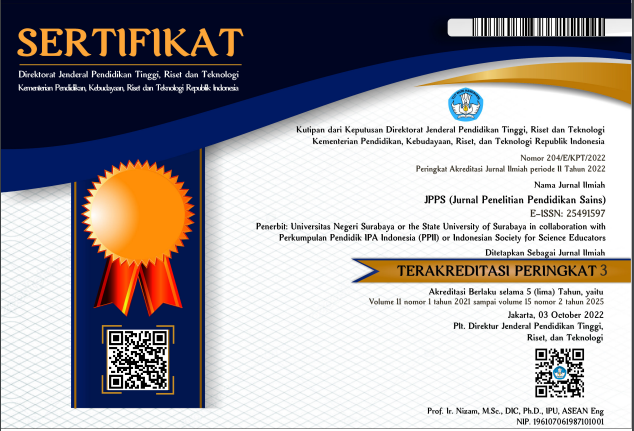Trend of Mobile Learning Implementation in Science Education from 2010 to 2021
DOI:
https://doi.org/10.26740/jpps.v12n1.p14-25Keywords:
Bibliometric, Digital Learning, E-Book, Mobile Learning, Science EducationAbstract
The use of mobile learning has increased since the digitalization era. The progress of digitalization also has an impact on the world of education. The trend regarding mobile learning use is a hot topic discussed and attractive to its developers. This study aims to determine the mobile learning trend in science education for the last 11 years. This study uses qualitative bibliometric analysis of Scopus metadata. Results show that the trend of mobile learning increases yearly based on the trendline. Hence, further researchers could develop or conduct research on this keyword as an improvement to science education fields. Furthermore, future researchers can study more deeply to top contributed authors to improve the lack of previous research and complete the novelties of the research.
Downloads
References
Abad-segura, E., Gonz, M., Rosa, A. L., & Cevallos, M. (2020). Sustainability of educational technologies : An approach to augmented reality research. Sustainability, 12(10), 4091-4100. https://doi.org/10.3390/su12104091
Alsadoon, H. (2020). Obstacles to using e-books in higher education. International Journal of Education and Literacy Studies, 8(2), 44. https://doi.org/10.7575/aiac.ijels.v.8n.2p.44
Arici, F., Yildirim, P., Caliklar, ?., & Yilmaz, R. M. (2019). Research trends in the use of augmented reality in science education: Content and bibliometric mapping analysis. Computers and Education, 142, 103647. https://doi.org/10.1016/j.compedu.2019.103647
Azoulay, P., Greenblatt, W. H., & Heggeness, M. L. (2021). Long-term effects from early exposure to research : Evidence from the NIH. Yellow Berets, 50(July), 1-10.
Hamidi, H., & Jahanshaheefard, M. (2018). Essential factors for the application of education : A case study of students of the university of technology Essential factors for the application of education information a case study of students of the university of technology. Telematics and Informatics, 38, (1-19). https://doi.org/10.1016/j.tele.2018.10.002
Hussey, H. (2011). Use of technology in teaching and learning. United States: U.S. Department of Education.
Sofyan, N. (2021). The role of English as a global language. Edukasi, 19(1), 21. https://doi.org/10.33387/j.edu.v19i1.3200
Downloads
Published
How to Cite
Issue
Section
License
Copyright (c) 2022 JPPS (Jurnal Penelitian Pendidikan Sains)

This work is licensed under a Creative Commons Attribution-ShareAlike 4.0 International License.
 Abstract views: 389
,
Abstract views: 389
, PDF Downloads: 337
PDF Downloads: 337












